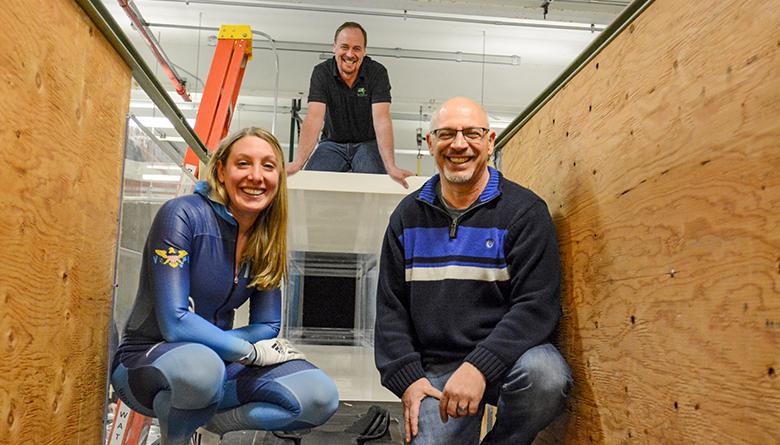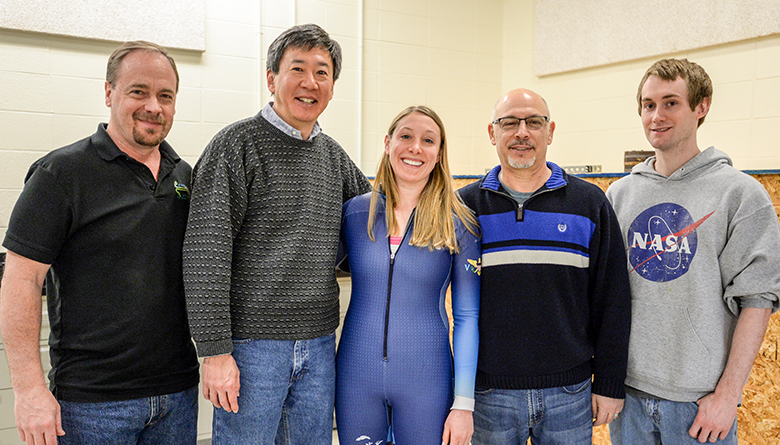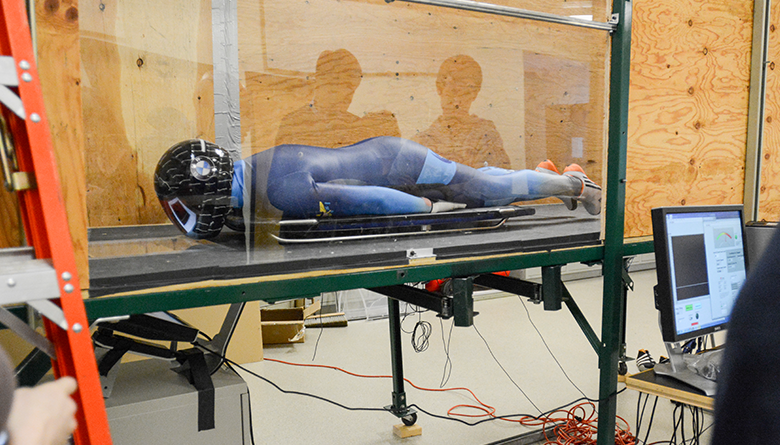
Katie Tannenbaum
Competitor on the Skeleton World Cup circuit for the United States Virgin Islands
By Torie Wells
Katie Tannenbaum is at the top of her game. As a professional skeleton athlete, Tannenbaum barrels headfirst down an ice track on a small sled with no steering mechanism. It takes tremendous bravery to merely attempt, let alone compete regularly in the sport.
Among the competition, Tannenbaum stands out. She was recently elected to be the representative for female skeleton athletes on the International Bobsleigh and Skeleton Federation’s Athletes Committee. One of the keys to her athletic success, she said, is an understanding of the science behind the sport.
“To be a really, truly, successful athlete is so much more than just being strong or fast. You really have to have all of the pieces: the mindset, the physical component, the science and technology,” said Tannenbaum.
In 2017, Tannenbaum visited the Center for Flow Physics and Control (CeFPaC) at Rensselaer Polytechnic Institute to deepen her understanding of her own performance through testing and data analysis. CeFPaC isn’t traditionally focused on athletic performance. Researchers use its facilities, particularly its state-of-the-art wind tunnel, to develop tools to improve the safety and performance of aircrafts and vehicles, improve the construction and function of buildings, and expand the use of wind turbines.
Tannenbaum turned this same technology on herself, examining everything from her body position and her suit to her helmet and sled.
“The idea was to see how we could improve the performance of an athlete by looking at a few things,” said Michael “Miki” Amitay, the director of CeFPaC, and professor of aerospace engineering at Rensselaer. “One of them is their body posture. How do they actually sit or lay on the sled? Any kind of movement that they do, how does it affect the drag on them?”
Amitay assembled a research team made up primarily of Rensselaer students. Tim Wei, former head of the Rensselaer Department of Mechanical, Aerospace and Nuclear Engineering, also returned to campus to collaborate on the project.
With Tannenbaum inside the wind tunnel, the team was able to set the flow of air to mimic the flow she would experience if she were sledding at normal speed. With a window at the bottom of the tunnel, Tannenbaum could watch a computer screen for instant feedback.
“Any time she moved the head, or moved the leg, or moved any part of the body, immediately she saw either the positive or negative effect,” Amitay said.
Some of the feedback surprised her.
“We found several things in the wind tunnel that were kind of counterintuitive to what we thought was the most aerodynamic on the sled,” Tannenbaum said. “There are a lot of things that we changed, just like my body position and the way I prepare my sled before a race.”
In addition to working for Tannenbaum, any recommended changes or tweaks to her technique also had to make sense for skeleton.
“We literally had the rule book for the sport open in front of us, because we had to pay very close attention,” she said. “If we’re going to try to make changes that are beneficial, we need to make sure they are in the scope of the rules.”
Following her visit to Rensselaer, Tannenbaum said that her performance has improved. Her deeper understanding of the sport and the rules will also inform her approach to her new role as a voice for her fellow athletes.
“The Virgin Islands have never had someone in this position,” she said. “So, it’s really cool both for the Virgin Islands and for all the other very small nations that are participating in bobsleigh and skeleton.”







